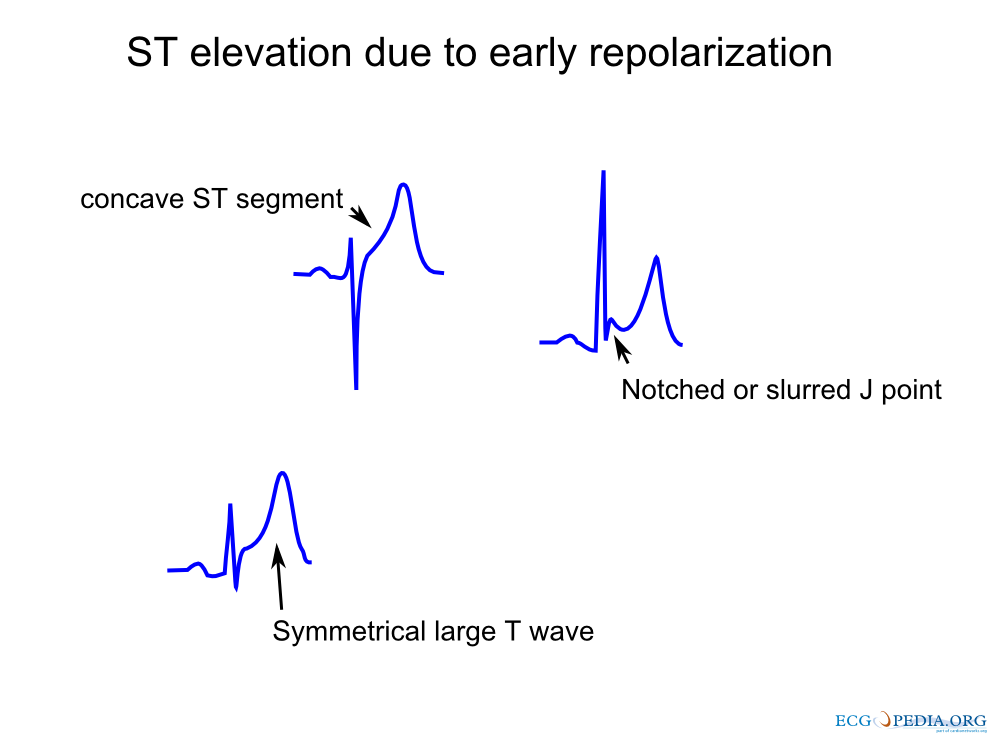From the recently discovered (for me anyhow) ECG Pedia.org
Early repolarisation remains a challenge for me. I know (in a gut way) looking at it when it seems normal and when it looks not quite right. But I’ve never been clear where the J-point was and when it was allowed to be high take-off and when it wasn’t.
Here are a few tips from the site:
- an upward concave elevation of the RS-T segment with distinct or “embryonic” J waves
- slurred downstroke of R waves or distinct J points or both
- RS-T segment elevation commonly encountered in the precordial leads and more distinct in these leads
- rapid QRS transition in the precordial leads with counterclockwise rotation
- persistence of these characteristics for many years (in other words if it looks different in the 2nd ECG then worry)
- absence of reciprocal ST depression
- large symmetrical T waves
And a nice pic to show it:

One of the best papers I’ve seen on ST elevation is this one from the NEJM:
Wang K, Asinger RW, Marriott HJL. ST-segment elevation in conditions other than acute myocardial infarction. N Engl J Med 2003 Nov.;349(22):2128–2135. PMID 14645641

Hadn’t seen that ECG site before, lots of good stuff on there, thanks for the link!